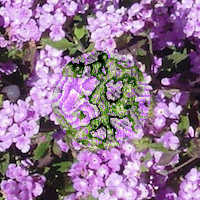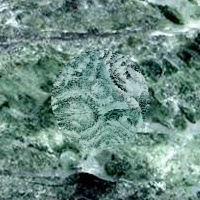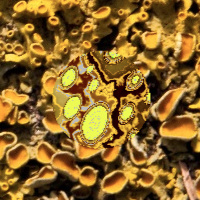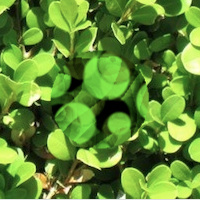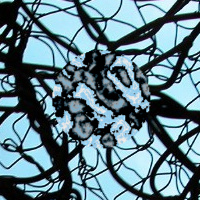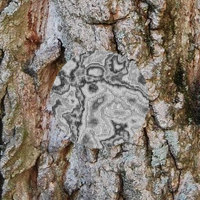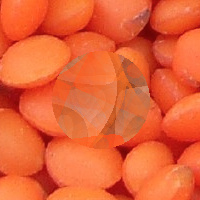In these experiments, the texture synthesis goal is described in terms of properties of the desired image. These properties include those that can be measured by looking at individual color pixels such as brightness, saturation and hue. We might look for maximum, minimum, average or median values of these properties. We might construct histograms of their distributions and look for certain properties of those. We may also analyze regions of the image larger than single pixels to measure spatial frequencies and orientations. We could look for the distributions of (for example) hue to see how they vary from one neighborhood to another.
A procedural description of the desired type of texture can serve as the fitness function to be used with evolutionary texture synthesis to generate a “random” texture that meets the description. This process can be repeated many times to generate a catalog of images from which an artist/designer can select suitable interesting textures.
Evolving Textures from High Level Descriptions: Harmonious Colors
This example evolves textures based on
the idea of a “harmonious color triplet” from color theory. Fitness is
based only on the colors in the texture. The geometric aspects of the
texture (shapes, patterns, frequencies) have no effect on fitness,
except to the
extent that they influence the distribution of hues and saturations of
colors in the texture. For the purpose of identifying harmonious color
schemes, hue is discretized into a histogram with 12 buckets. This
image category is described by four image metrics:
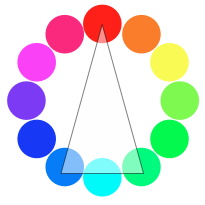
Below: samples of textures evolved to meet this criteria:
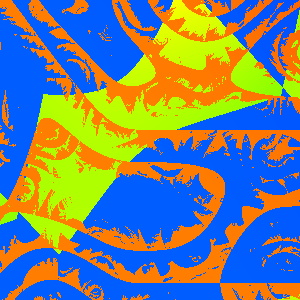
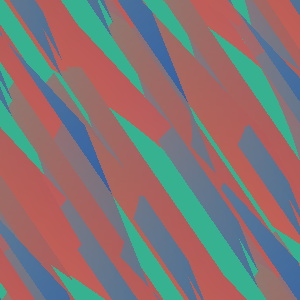
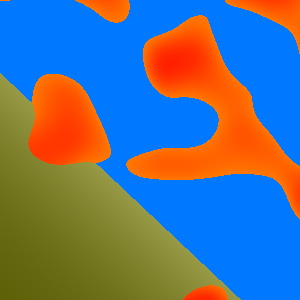
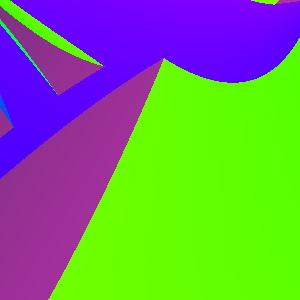
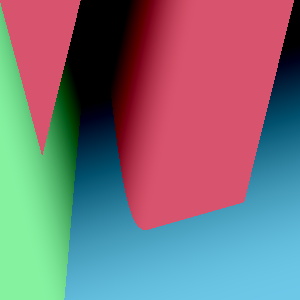
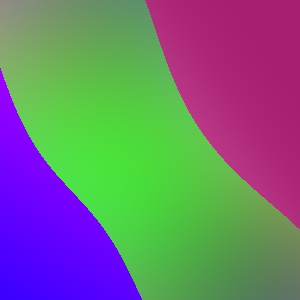
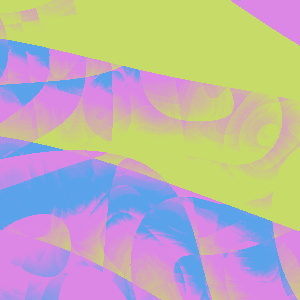
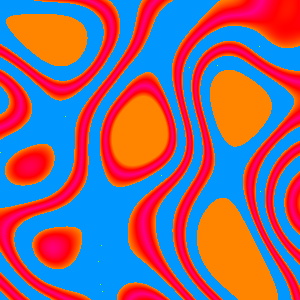
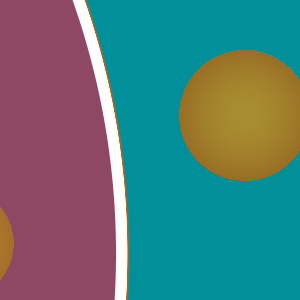
- colorful: most pixels must have saturation above a given threshold
- pixel colors should fall primarily into three hue buckets, and the counts in those buckets should be roughly in a ratio of 3:1:1
- the other nine histogram buckets should be nearly empty
- the three dominant hues should form “harmonious color triplet”

Below: samples of textures evolved to meet this criteria:









Evolving Textures from High Level Descriptions: High frequency top, low frequency bottom (“hftlfb”)
These textures are evolved to have high
frequencies at the top of the image and low (but not zero) frequencies
at the bottom. Frequency measurements are made solely on the brightness
(intensity) of the pixel values, so hue and saturation are ignored. The
examples below which contain color do so only accidentally because it
has no impact on fitness. This
image category is described by three image metrics:
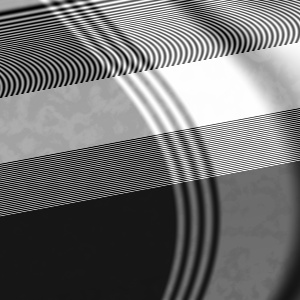
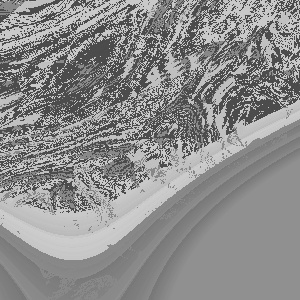
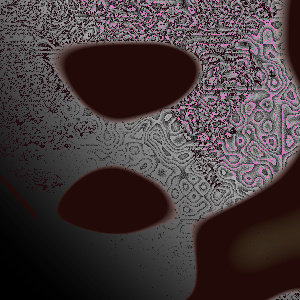
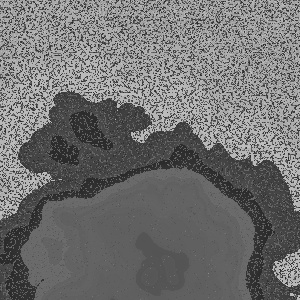
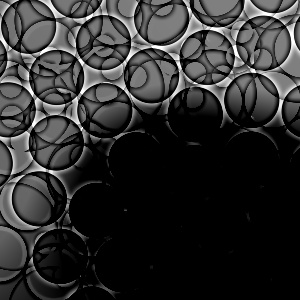
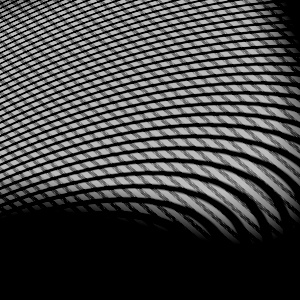
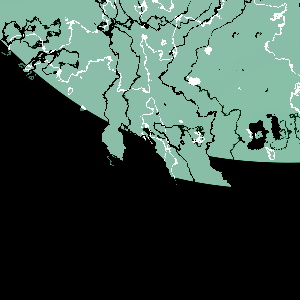
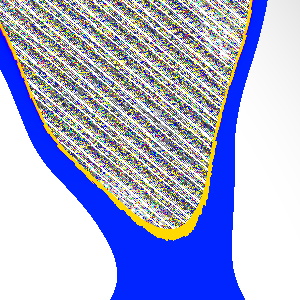

- high frequency in top 1/4 of image
- low frequency in bottom 1/4 of image
- prefer some variation at bottom









Evolving Textures from High Level Descriptions: Gray with an Accent Color
This experiment involved choosing a single image type (“a gray texture
with a small amount of saturated accent color”) then exploring how best
to represent the fitness function to guide evolution texture synthesis
to automatically produce many examples of it. This fitness function was
programmed by hand. The eventual goal of this work is to find a way to
allow a visual designer to specify their own goals. This experiment is
described in a paper in the proceedings of evoMusArt
2011:
Craig Reynolds. 2011. Evolving Textures from High Level Descriptions: Gray with an Accent Color. In C. Di Chio et al. (Eds.): evoApplications 2011 (Applications of Evolutionary Computation). LNCS Springer.
Abstract: This paper describes a prototype evolutionary texture synthesis tool meant to assist a designer or artist by automatically discovering many candidate textures that fit a given stylistic description. The textures used here are small color images, created by procedural texture synthesis. This prototype uses a single stylistic description: a textured gray image with a small amount of color accent. A hand-written prototype fitness function rates how well an image meets this description. Genetic programming uses the fitness function to evolve programs written in a texture synthesis language. A tool like this can automatically generate a catalog of variations on the given theme. A designer could then scan through these to pick out those that seem aesthetically interesting. Their procedural “genetic” representation would allow them to be further adjusted by interactive evolution. It also allows re-rendering them at arbitrary resolutions and provides a way to store them in a highly compressed form allowing lossless reconstruction.
Below: samples of textures evolved to meet the criteria “a textured gray image with a small amount of color accent”:
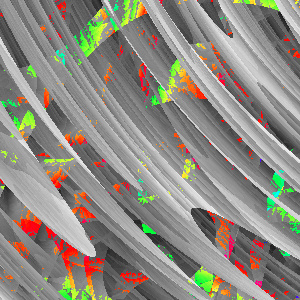
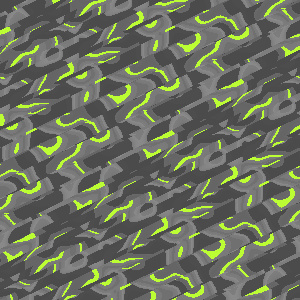

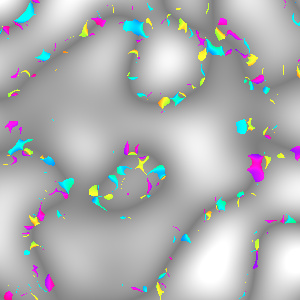
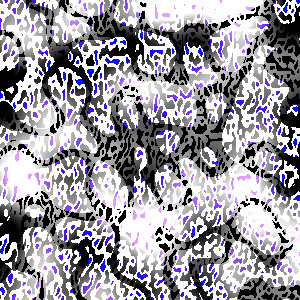
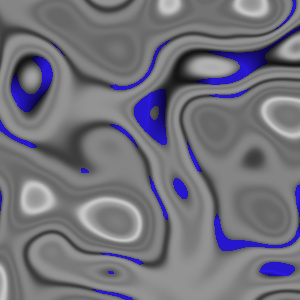
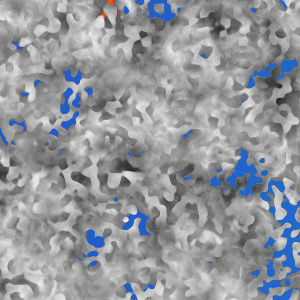
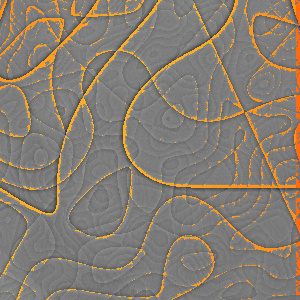
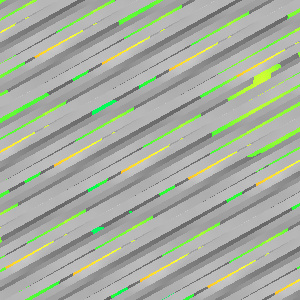
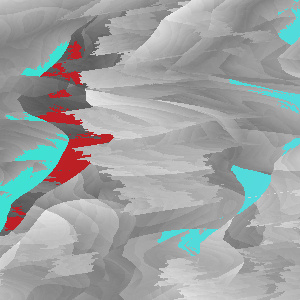
Craig Reynolds. 2011. Evolving Textures from High Level Descriptions: Gray with an Accent Color. In C. Di Chio et al. (Eds.): evoApplications 2011 (Applications of Evolutionary Computation). LNCS Springer.
Abstract: This paper describes a prototype evolutionary texture synthesis tool meant to assist a designer or artist by automatically discovering many candidate textures that fit a given stylistic description. The textures used here are small color images, created by procedural texture synthesis. This prototype uses a single stylistic description: a textured gray image with a small amount of color accent. A hand-written prototype fitness function rates how well an image meets this description. Genetic programming uses the fitness function to evolve programs written in a texture synthesis language. A tool like this can automatically generate a catalog of variations on the given theme. A designer could then scan through these to pick out those that seem aesthetically interesting. Their procedural “genetic” representation would allow them to be further adjusted by interactive evolution. It also allows re-rendering them at arbitrary resolutions and provides a way to store them in a highly compressed form allowing lossless reconstruction.
Below: samples of textures evolved to meet the criteria “a textured gray image with a small amount of color accent”:










Testing evolutionary texture synthesis
My first version of “evolving textures from high level descriptions”
was written to debug the evolutionary texture synthesis component of
the camouflage project. I wanted to test the
interface between my texture synthesis
library and the evolutionary computation performed by Open BEAGLE. It didn't matter
much what the fitness function was, as long as it drove evolution
sufficiently to stress test the whole system. I tried some simple
criteria but evolutionary computation is extremely good at finding
simple solutions for simple criteria. The fitness function that
resulted after several experiments combined four criteria or metrics:
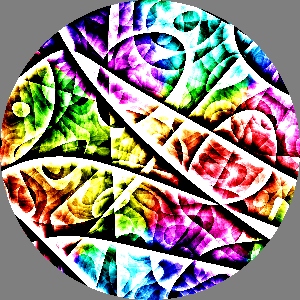
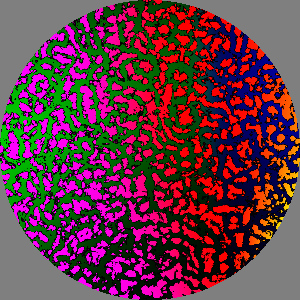

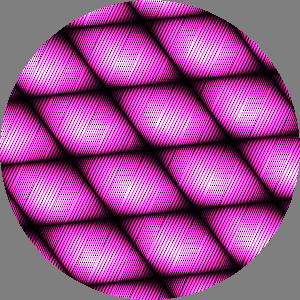
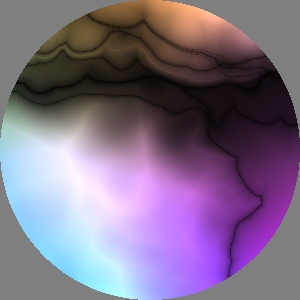
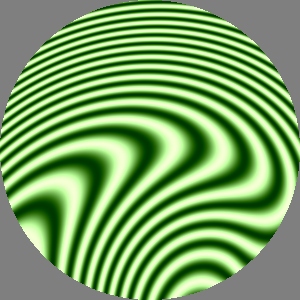
- how close to midrange is the average intensity?
- how rare are regions of flat, unchanging color?
- are lights and darks well represented in the brightness histogram?
- is the average saturation above a certain threshold?






